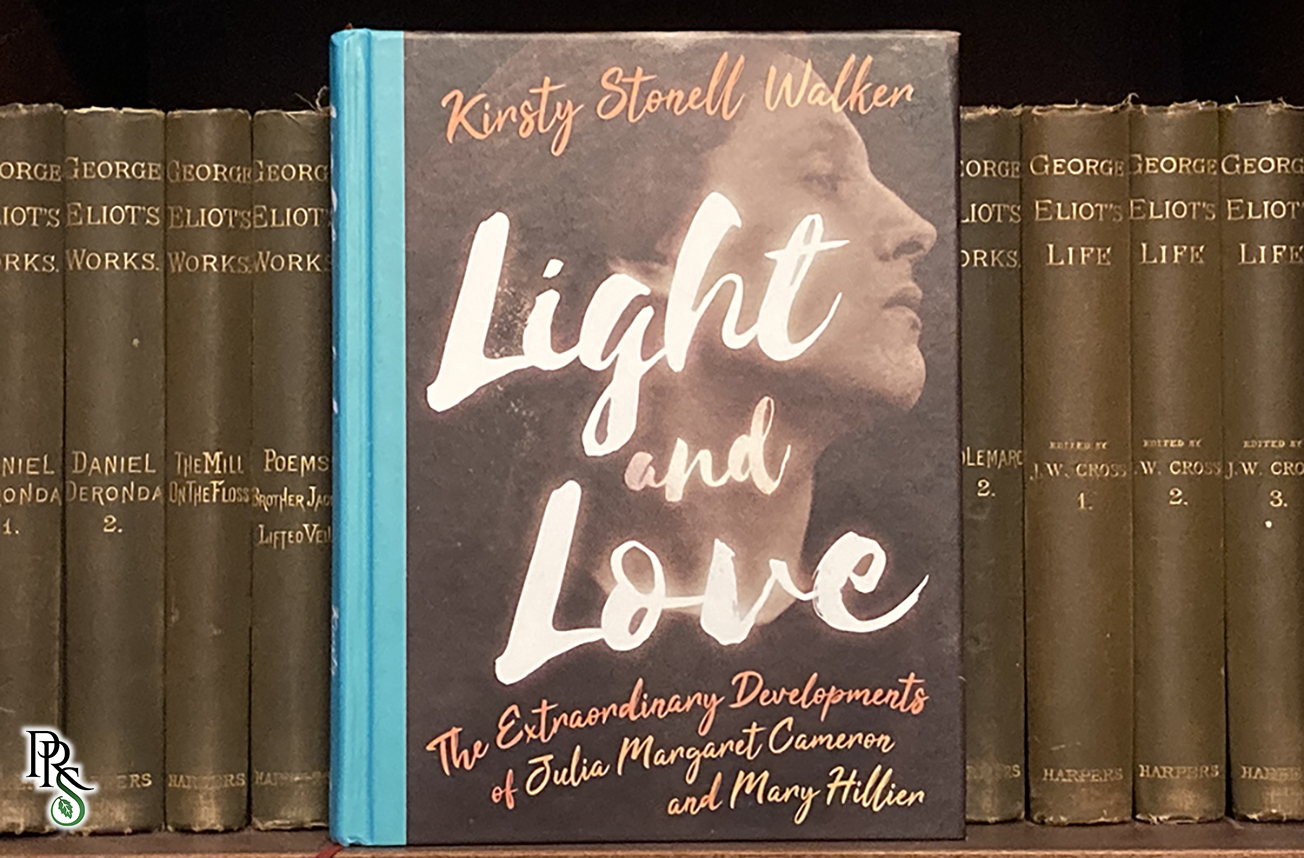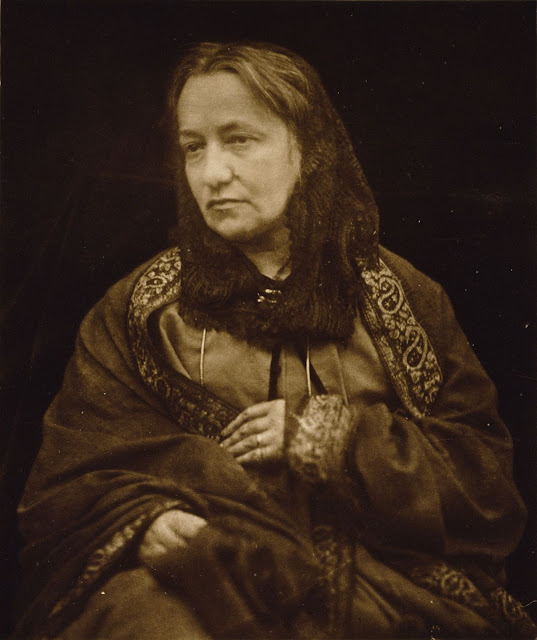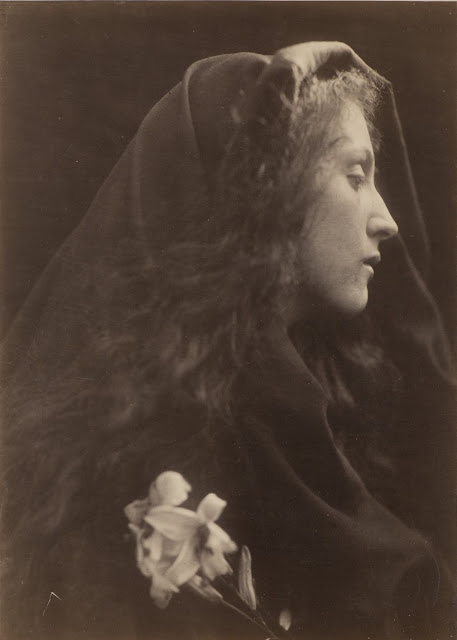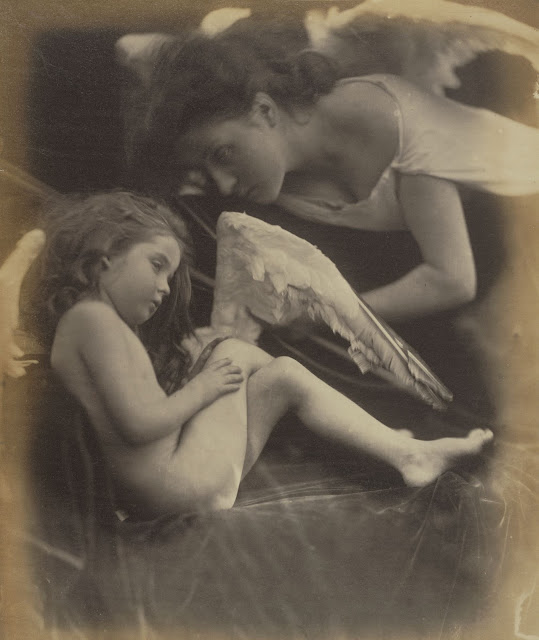Kirsty Stonell Walker’s Light and Love: The Extraordinary Developments of Julia Margaret Cameron and Mary Hillier intriguingly explores how the gift of a camera transformed the lives of two women, one the lady of the house, the other her maid. Together they created a unique body of work that influenced countless generations of photographers.
Julia Margaret Cameron received her first camera at the age of 48, a gift from her daughter and son-in-law. She immediately threw herself into learning the medium and savored the creative process, using family, members of her household, and her circle of friends as subjects.
One member of her household, parlor maid Mary Hillier, quickly became Julia’s favorite model and it’s that relationship that forms the basis of Light and Love – an in-depth exploration of the relationship between artist and subject, and how the creative process impacted both of their lives.
“Unlike some of Julia’s contemporary photographers who dressed their women in rags and degradation, Julia crowned her models in stars, sometimes literally, and never allowed her parlor maid to be seen as anything other than perfection. Mary allows us to see the beauty of Julia’s vision, not just in photography, but also in life. For Julia, women were not things to look down on and feel superior to, they were examples of magnificence.”
– Kirsty Stonell Walker
Full disclosure: Kirsty Stonell Walker is a friend of mine. I always eagerly anticipate reading her latest books. Our interests are frequently in alignment, and her scholarship regarding Pre-Raphaelite women not only has my deep respect, but it’s a shared passion we’ve bonded over.
If not for Kirsty’s efforts, much about the life of Victorian artist’s model Fanny Cornforth would not be known. In her research, she digs deep, pursuing avenues and leads – a veritable Pre-Raphaelite gumshoe.
In addition to her nonfiction works, Kirsty is also able to expertly spin a compelling narrative.
In her book A Curl of Copper and Pearl, Kirsty crafts a fictionalized account of one of Dante Gabriel Rossetti’s favorite models, Alexa Wilding, while in another fictional work, We Are Villains All, Kirsty dons her whodunit cap and creates a Victorian era mystery resplendent with poetry and the art of early photography.
A longtime champion of women, Kirsty’s work shines a light on the lives of Victorian women involved in the arts, and their struggles to balance their passionate pursuits with society’s expectations. In doing so, she’s allowing us to view our own modern perceptions of women as creators and how that intersects with today’s world.
So Kirsty is uniquely suited to tell the story of Julia Margaret Cameron and Mary Hillier with the research, insight, and sensitivity it deserves. Like Cameron, she lovingly embraces the imperfections of her subjects.
Quite often when we explore the role of artist and subject, it consists of a male artist/female muse dynamic, frequently with a romantic aspect. So Kirsty’s concept of delving into the lives of Julia and Mary as creator and subject and how those roles influenced their lives, fascinated me. A work that presents a dual biography of the famed photographer and her preferred model is a rarity.
Exploring photography and pushing its limits was a consuming passion for Julia, but as her work was admired, how many viewers at the time thought about the model or wondered about her life? What impact did being the focal point in Julia’s surreal, dream-like photography have on a Victorian maid who suddenly found herself in the midst of artistic and literary luminaries?
Julia Margaret Cameron gave Mary Hillier a place of honor in her work, now Kirsty Stonell Walker extends that respect, fleshing out Mary’s life beyond the lens.
Julia used focus, light, and shadow in a very deliberate way, choosing not to create a polished photograph, but one that cultivated a dramatic, surreal quality.
She embraced smears, swirls, and imperfections that other professional photographers of the time disparaged.
It’s as if she demanded that her pictures reach beyond the realism that primal photography offered. Reading about her in Kirsty’s book, we get a sense of Julia eagerly striving to push herself and the medium to create something more.
This passion no doubt had an impact on parlor maid Mary, who also found herself in a starring role in Julia’s creations – a juxtaposition that Kirsty Stonell Walker’s Light and Love explores with compelling, heartfelt prose that encompasses not only the author’s interest in their lives, but a warmth and appreciation for the important role these women played in art history.




